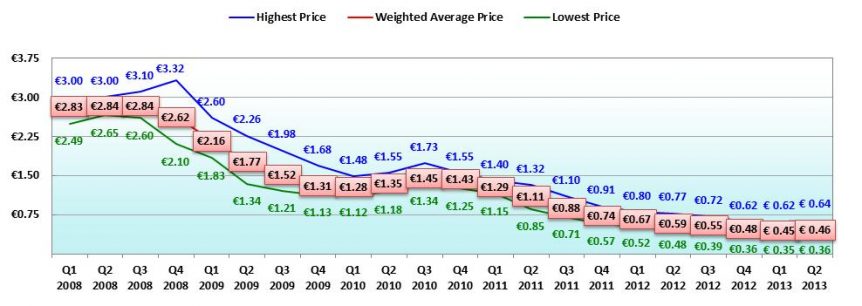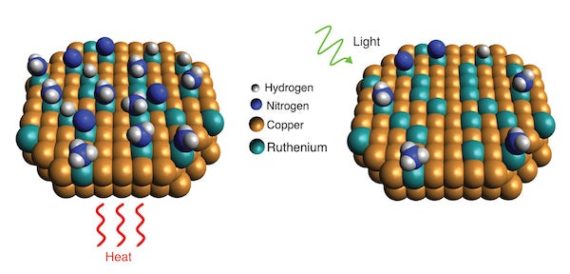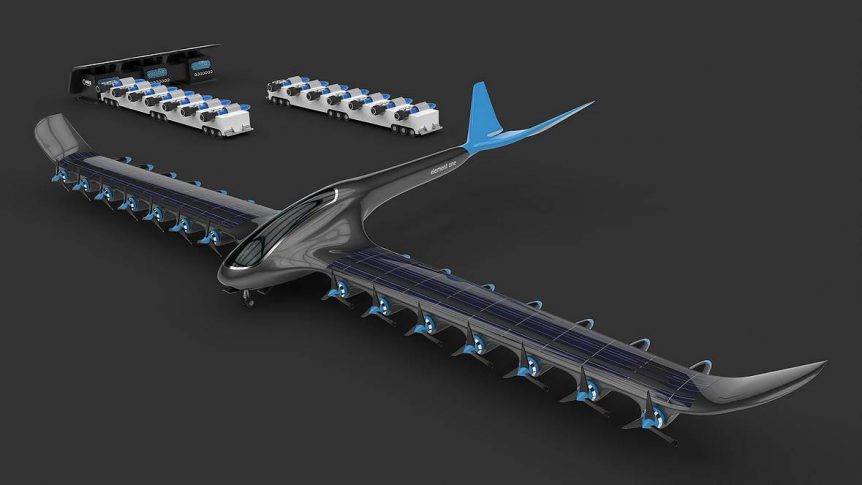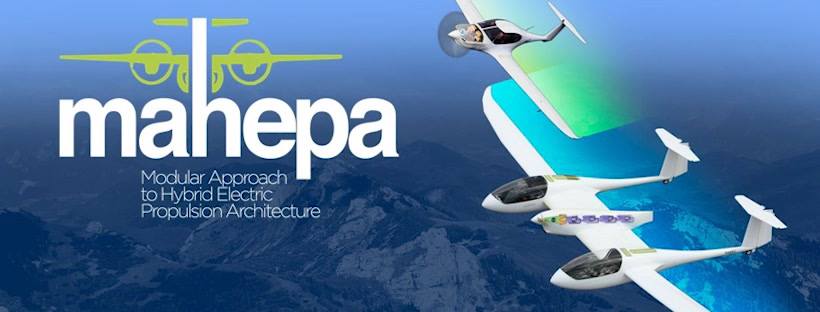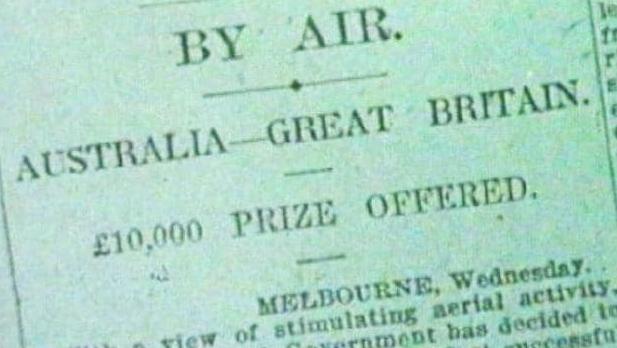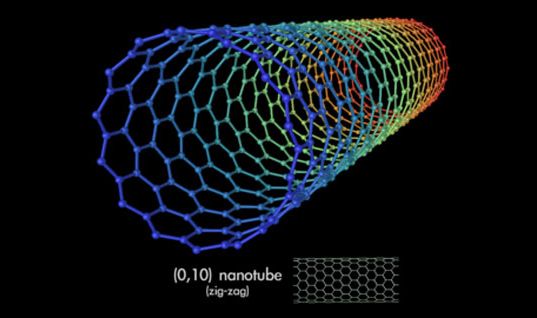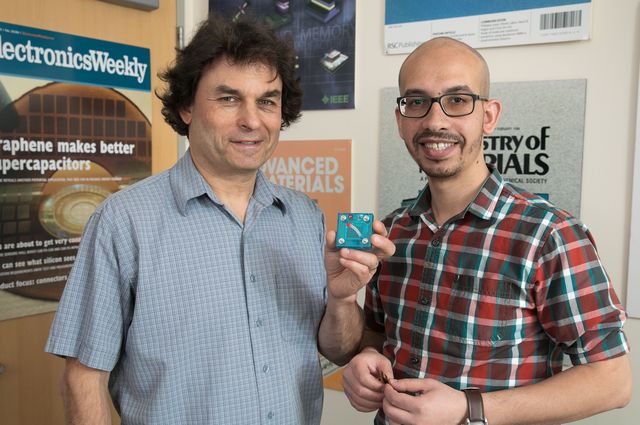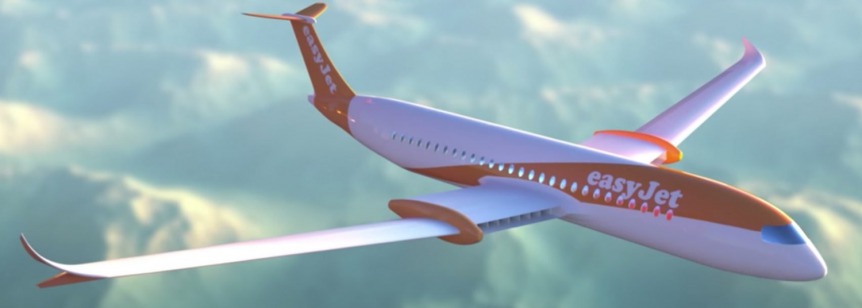Making a Designer Iron Molecule To make more affordable solar cells, researchers at Sweden’s Lund University are not just trying to be cheap, they are avoiding tightening markets in expensive noble metals like ruthenium, osmium and iridium. A more common metal such as iron, constituting six percent of the earth’s crust, might just be the answer to several issues. One problem keeps it from being a great solar cell component. Iron just doesn’t take a shine to solar radiation. In the careful words of the abstract for the research team’s paper, iron’s shortcoming is exposed. “However, the photoexcitable charge-transfer (CT) states of most Fe complexes are limited by picosecond or sub-picosecond deactivation through low-lying metal centered (MC) states, resulting in inefficient electron transfer reactivity and complete lack of photoluminescence.” In other words, ordinary iron is just a flash in the pan when light strikes it and doesn’t kick any electrons around – not great behavior for solar cells. Chemistry Professor …
Eraole in Flight – Further and Higher
Eraole is a unique machine in a sea of unique craft. Powered by a combination of sunlight, Total biofuel, and hydrogen, Raphael Dinelli’s tandem-winged biplane has been under development for many years. With it, Raphael hopes to cross the Atlantic in 2019, Duplicating Charles Lindbergh’s 1927 flight at about half the Spirit of the Spirit of St. Louis’s speed. Eraole’s first flight took place in 2016. The video will allow you to compare its look then with its changed appearance today. Changes of Plane, Changes of Plans Dinelli’s original plan for the flight included the use of an algae-derived fuel to run Eraole’s engine/generator. As reported by La Tribune, though, “For four years, the Ocean Vital Foundation conducted research with the Fermentalg research laboratory in Libourne to produce a fuel based on micro-algae. “’Despite the additives that could be added, the oil froze at altitude and became impossible to use,’ says Raphael Dinelli, who had to bring himself to fill …
Ammonia + Light = Hydrogen
Hydrogen continues on its course of always being five to ten years away as a cheap, viable storage mechanism for energy. The ideal of driving a car that emits only water vapor (or flying an airplane that zooms about on a few pounds of H2) seems like an ever-distant dream. Tina Casey, writing for Gas2.com reports on Rice University solution using stinky ammonia that might clear the air for hydrogen, though. She explains that the October 8th celebration of the fourth annual Hydrogen and Fuel Cell Day was great for natural gas stakeholders, since the gas is the primary source today for hydrogen. Her headline indicates this could become a leading way to store and extract H2: “Forget the Hydrogen Economy, Here Comes the Ammonia Economy.” So Desirable. So Hard to Get. Casey explains the big drawbacks to this market – fugitive greenhouse gas emissions and natural gas’s non-sustainable nature. Another factor, the often high cost of producing H2, adds to …
HES Element One Could Fly Four 5,000 Kilometers
Horizon Energy Systems (HES), originally based in Singapore, has pursued lightweight hydrogen propulsion systems for the last 12 years, primarily for amall drones. Going larger, the company announced plans today for Element One, “the world’s first regional hydrogen-electric passenger aircraft.” A four-passenger, 14-motored (!) monoplane, Element One will carry the lucky foursome 500 to 5,000 kilometers (310 to 3,100 statute miles). This distributed power system claims “virtually no change to its current drone-scale systems,” which is a little puzzling, considering the largest of such systems produces no more than 1,000 Watts. The scale of the Element One and its power packs is ambiguous, with illustrations showing a nine-axle trailer with attached solar panels ostensibly powering the on-site production of H2. One illustration depicts a drone-launching site with fuel pods possibly approximating the size of the units that will be used on Element One. These are larger and their scale relative to the people in the illustration gives an approximation of …
Pipistrel leads MAHEPA – European hybrid research
Aviation Week’s Graham Warwick reports, “Europe plans to develop and test modular hybrid-electric propulsion technology using light aircraft as testbeds, but it is also studying whether the system can be scaled up to power 19- and 70-seat commercial aircraft. The MAHEPA Program intends to bring cleaner skies to Europe. Pipistrel, the Slovenian winner of NASA’s Green Flight Challenge in 2011, leads the 9 million euro ($10.4 million) program. Modular Hybrid Electric Propulsion Architecture (MAHEPA), funded as part of the European Union’s Horizon 2020 research program, will use real flight data to recommend how to reduce aviation carbon emissions 70-percent by 2050. Pipistrel will supply two well-tested aircraft for HAHEPA’s continued investigation of lowering emissions and expanding performance capabilities. First, its Hypstair hybrid four-seater is already at a technology readiness level (TRL) of 4, and MAHEPA will raise that to 6, ready to enter product development. Second, its eight-year-old G4, the battery-powered winner of the Green Flight Challenge and now converted …
The Coming Golden Age of Electric Air Races?
An Electric Great Air Race 100 years ago, a great air race – “The Great Air Race” – in fact, was held with competitors flying from Great Britain to the Northern Territories of Australia. Crews had 30 days to make the trip, and considering the reliability of engines at that time and the primitive nature of aerial navigation, very little time to relax. Of the six teams that entered, only two made it, three crashing (two fatally) and a fourth team being imprisoned in Yugoslavia as suspected Bolsheviks. Only two teams finished, and only one received the 10,000 Pound Sterling prize (about 544,577 pounds today – over $775,000), enough to cause the six crews to accept the high risk involved. The winning flight, in a Vickers Vimy WWI bomber, inspired the founders of Qantas to begin regular airline service in the country, with that company, nearly a century later, able to offer transit from Los Angeles to Sydney for under …
Cleaning Up Methane for Cheap Hydrogen and Products
Natural gas promoters explain that it burns much cleaner than other fossil fuels such as coal or gasoline. What if we can turn it into a zero-pollution fuel, and get a few bonus products from it? One big dream, capturing greenhouse gases and turning them into useful, non-polluting fuels or even materials, still drives researchers to find those answers. We have reported on several approaches to turning atmospheric carbon into carbon fiber recently, but Southern California Gas Co. (SoCalGas) is working on turning its main product, natural gas, into hydrogen, carbon fiber, and carbon nanotubes. SoCal has partnered with the startup C4-MCP with the goal of offsetting the expense of making hydrogen by selling carbon fiber and carbon nanotubes that come incidentally from the production of the hydrogen. Those material sales could lower the cost of hydrogen to $2 per kilogram, competitive with conventional gasoline and Diesel vehicles. Yuri Freedman, SoCalGas’ senior director of market development, explains, “This technology takes …
Toyota, BMW Fahrting Around with Clean Energy
Fahrt is German for drive, to clear things up immediately. Both Toyota and BMW are experimenting with the cruder form of the word, though, to bring about greener, cleaner driving. Both have bio-energy plans that use animal and even human waste to generate methane – a greenhouse gas that when burnt, combats air pollution. Variations on the theme may someday power our aircraft. Harold Bate and a Little Prehistory This is not a new idea. Harold Bate, a Devonshire farmer, became a counter-culture hero in the 1970s by powering his Hillman Minx sedan with manure. Like all visionaries, Harold was a bit ahead of his time, but became well known and envied when the Arab oil embargo of that decade left motorists waiting in line for fuel and confronted with rationing for the first time since WWII. The charming film from the National Film Board of Canada highlights the simplicity of his homegrown approach and the depth of his understanding. …
Three-in-One Device Stores Energy, Makes Hydrogen
UCLA researchers Richard Kaner and Maher El-Kady, “Have designed a device that can use solar energy to inexpensively and efficiently create and store energy, which could be used to power electronic devices, and to create hydrogen fuel for eco-friendly cars.” Kaner and El-Kady have devised many low-budget approaches to capturing and exploiting energy, such as their method of “burning” supercapacitors on a personal computer DVD. Their newest accomplishment, according to Kaner, “Could dramatically lower the cost of hydrogen cars.” It would be useful in urban or rural areas, or even on remote battlefields, giving users the ability to make both electricity and fuel from the same device. In cities, it could store surplus energy from electrical grids, and in more remote locations, allow energy generation and fuel creation “off the grid.” The pair’s replica of the device looks like a designer electronic gizmo encased in a turquoise plastic case. It uses inexpensive, abundant elements like nickel, iron and cobalt to …
Jeff Engler’s Wright Aero Leaps Into Green Flight
Partnering with easyJet, a UK-based budget airline, to build an electric airliner capable of carrying 150 passengers on sub-two-hour flights, Wright Aero will substitute electrons for liquid fuel on one-fifth of EasyJet’s trips. Finding a ready collaborator in easyJet’s Carolyn McCall, Engler has a partner who is already making inroads into making jet flight cleaner. “’We can envisage a future without jet fuel and we are excited to be part of it. It is now more a matter of when not if a short haul electric plane will fly,’ said EasyJet CEO McCall,” in an interview with The Guardian. Engler added, in his latest Wright Weport: “First, the context is on Wednesday easyJet announced a partnership with us during their Innovation Day…. We could not be more excited! “(Note: if you have a second, would you mind posting the article on facebook/twitter? We’re hoping it reaches as many battery researchers’ eyes as possible! Thank you in advance!) “Second, our main takeaway …

